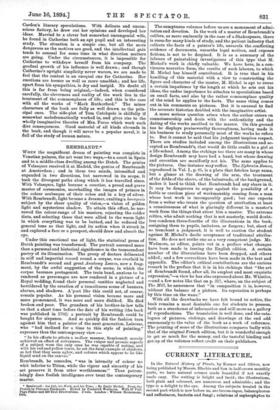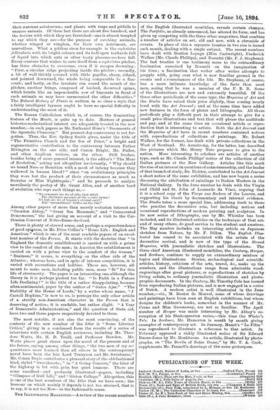CURRENT LITERATURE.
In the Natural History of Plants, by Kerner and Oliver, now being published by Messrs. Blackie and Sou in half-crown monthly parts, we have natural science made beautiful if not exactly made easy. The writing is bright and lucid ; the illustrations, both plain and coloured, are numerous and admirable ; and the type is a delight to the eye. Among the subjects treated in the second part which is now before us, are broom-rapes, balanophorere and raillesiacete, bacteria and fungi; relations of saprophytes to their nutrient substratum ; and plants with traps and pitfalls to ensnare animals. Of these last there are about five hundred, and the devices with which they are furnished—one is almost tempted to say which they use—for the purpose of catching animals, whether winged or wingless, for their own nutriment, are marvellous. What a pitiless siren for example is the cephalotus follicularis with its bright colours and its half-open tankards full of liquid into which ants or other hasty pleasure-seekers fall. Every creature that wishes to save itself from a cephalotus pitcher, has three obstacles to overcome, even if it escapes drowning : "First, a circular ridge projecting inside the pitcher; secondly, a bit of wall thickly covered with little papilla, sharp, ridged, and pointed downward, the whole being comparable to a flax- comb; and lastly, on the involute rim round the mouth of the pitcher, another fringe, composed of hooked, decnrved spines, which bristle like an impenetrable row of bayonets in front of such animals as may have surmounted the other difficulties." The Natural History of Plants is written in so clear a style that a fairly intelligent layman ought to have no special difficulty in understanding the most of it.



































 Previous page
Previous page